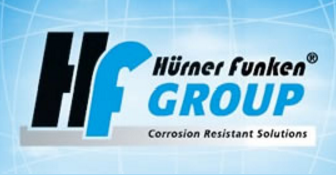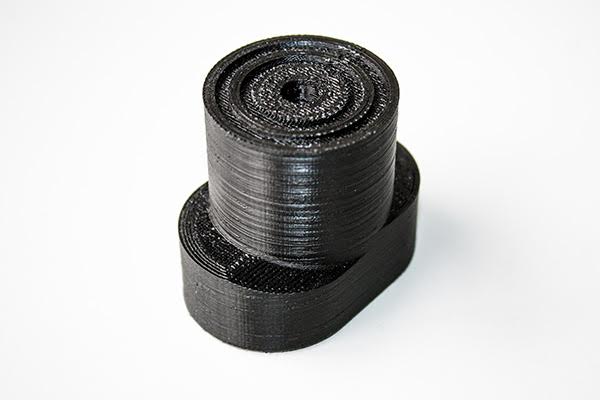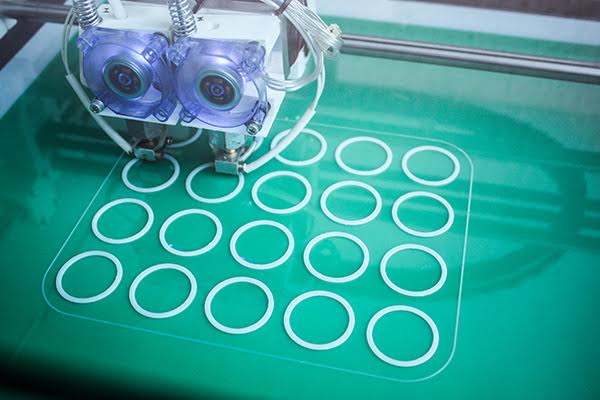 Germany’s Hürner-Funken is in the business of making quality fans that don’t corrode. Considering they’ve been doing this for nearly a century, while processes may have had some transformations over time, we figure we can trust they know what they are doing.
Germany’s Hürner-Funken is in the business of making quality fans that don’t corrode. Considering they’ve been doing this for nearly a century, while processes may have had some transformations over time, we figure we can trust they know what they are doing.
Based in Mücke-Atzenhain near Gießen, Hürner-Funken remains a leader in the design, development, and manufacturing of both industrial and laboratory fans, as well as components for ventilation systems. While very active in Europe, the company also has subsidiaries spread out through the Middle East and Asia.
Because their components and products are made primarily of plastic—offering a host of benefits on its own in manufacturing–it’s easy to see that Hürner-Funken would explore 3D printing as an alternative to traditional processes. Having done their research on the technology several years ago, they’ve been using the German RepRap X400 ever since, allowing for the expedient, quality production of special series, function samples and prototypes.
“We have been using 3D printing and rapid prototyping for a long time now, however, the stereolithography equipment available at the beginning was of no use to us due to the limited selection of materials–we wanted to print with a material that would match the final product as closely as possible,” said Benjamin Wolf, head of the research & development department.
Thanks to a project Wolf was working on with a university, he had the fortunate opportunity to come across his first 3D printer. He watched project managers making prototypes and the idea was planted.
“We requested a bachelor thesis for the evaluation of a printer for our needs. The market analysis included the coverage of available materials, the build envelope and the price of the different devices and processes,” said Wolf. “The clear winner of this study was the X400 from German RepRap.”
The journey began from there upon choosing the machine that interested them and as one that appeared to suit their manufacturing purposes. According to Wolf, the German RepRap stood out as having the largest build envelope, coupled with an unbeatable price/performance ratio. And today at Hürner-Funken GmbH, designers and developers use the X400 when they are prototyping, as well as making sample parts for their own projects or for customers, or for sample batches.
And just to really make things more interesting–while many might consider polypropylene (PP) to be one of those ‘alternative’ materials for fabrication, that is indeed what they generally use at Hürner-Funken for 3D printing. Upon hearing that they make fans out of plastic, this may not have been what you were expecting; however, the team is thoroughly experienced, and with these materials they are able to get exactly what they need for project requirements.
“We have been working almost exclusively with PVC and PP since 1928 and therefore have a lot of know-how about handling the material,” Wolf explains. “Processing in the X400 with its closed build envelope is very straightforward.”
“Printing in PP is very important for us as the standard 3D printer materials PLA and ABS materials are not resistant to chemicals. With PP we therefore have virtually the same material properties with the 3D printed prototype parts as in the injection molded series production.”
According to the company, they now manufacture specific parts only with the 3D printing process, in small batches for four to ten parts, or for components that are hollow in places, or in total.
“This firstly saves material and secondly also weight–a critical factor in certain applications,” says Wolf.
With 3D printing, Hürner-Funken is experiencing and making thorough use of one of the greatest benefits of 3D printing: independence in production. With the self-sustainability offered by this technology, there’s no one to meet with, ask, or wait on for prototypes. Not only does it offer a great sense of freedom overall, but greater time, effort, and focus can be put into designs and resulting prints.
“We often previously had to wait weeks until we received prototypes from the model builder,” Wolf explains. “With the X400 this has been reduced to hours, sometimes also days, if we fully utilize the build envelope.”
 The benefit attached to the bottom line is also being enjoyed, and the company has discovered just how economical it can be when comparing 3D printing at headquarters with hiring someone to build a model during the prototyping process. Now, there is no model builder to wait on. Rather than waiting for weeks, anyone building a prototype can just get started. Obviously, the 3D printing process is just a matter of hours. This allows designers the latitude to experiment and experience failed designs and prints without recourse, while also working on unusual situations affordably and on their own time.
The benefit attached to the bottom line is also being enjoyed, and the company has discovered just how economical it can be when comparing 3D printing at headquarters with hiring someone to build a model during the prototyping process. Now, there is no model builder to wait on. Rather than waiting for weeks, anyone building a prototype can just get started. Obviously, the 3D printing process is just a matter of hours. This allows designers the latitude to experiment and experience failed designs and prints without recourse, while also working on unusual situations affordably and on their own time.
“The X400 from German RepRap has established itself here as an indispensable element of the development and production process,” says Wolf. “It is extremely robust and reliable so we can produce components in the original material very quickly and economically. We save weeks in the prototype stage and can offer our customers more bespoke solutions–for us the X400 from German RepRap is a gain for the entire line.”
It’s probably very safe to say that one of the biggest reasons for the successes and longevity of this German company is their propensity for trying new processes and technologies all along the way—and with 3D printing they hit the motherlode of rewards from self-sustainability to affordability to the ability to customize parts however they’d like.
German RepRap GmbH is headquartered in Feldkirchen, Munich, and was originally founded as the German RepRap Foundation (GRRF) in 2010. The company develops and manufactures 3D printers based on the RepRap technology (Fused Filament Fabrication), and sells these together with the software, filaments and accessories directly, as well as via a global network of qualified sales partners. German RepRap was the first company in Germany to put a RepRap-based large-capacity 3D printer for professional users on the market in the form of the X400.
Are you surprised they’ve been using the RepRap so long? Discuss in the Hürner-Funken 3D Printing forum over at 3DPB.com.
Subscribe to Our Email Newsletter
Stay up-to-date on all the latest news from the 3D printing industry and receive information and offers from third party vendors.
Print Services
Upload your 3D Models and get them printed quickly and efficiently.
You May Also Like
Reinventing Reindustrialization: Why NAVWAR Project Manager Spencer Koroly Invented a Made-in-America 3D Printer
It has become virtually impossible to regularly follow additive manufacturing (AM) industry news and not stumble across the term “defense industrial base” (DIB), a concept encompassing all the many diverse...
Inside The Barnes Global Advisors’ Vision for a Stronger AM Ecosystem
As additive manufacturing (AM) continues to revolutionize the industrial landscape, Pittsburgh-based consultancy The Barnes Global Advisors (TBGA) is helping shape what that future looks like. As the largest independent AM...
Ruggedized: How USMC Innovation Officer Matt Pine Navigates 3D Printing in the Military
Disclaimer: Matt Pine’s views are not the views of the Department of Defense nor the U.S. Marine Corps Throughout this decade thus far, the military’s adoption of additive manufacturing (AM)...
U.S. Congress Calls Out 3D Printing in Proposal for Commercial Reserve Manufacturing Network
Last week, the U.S. House of Representatives’ Appropriations Committee moved the FY 2026 defense bill forward to the House floor. Included in the legislation is a $131 million proposal for...



































